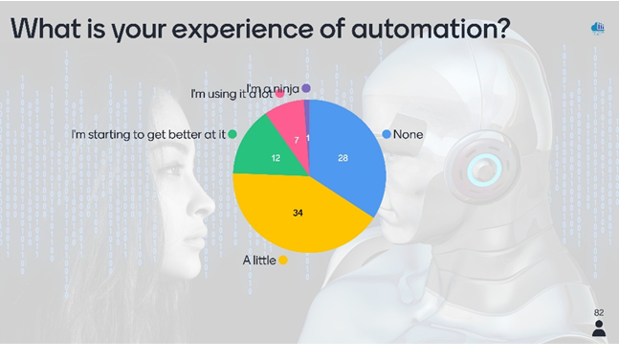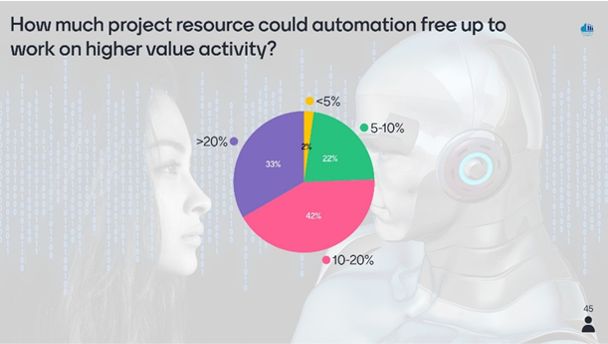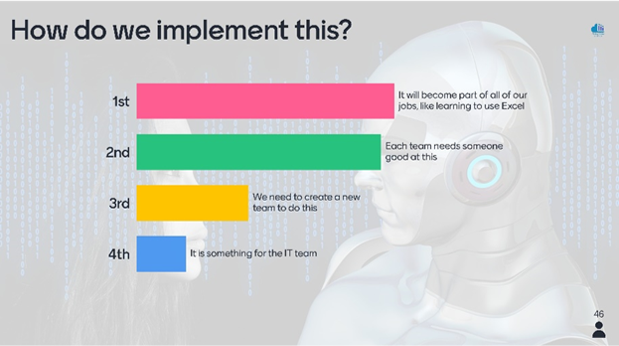Earlier in the year the Project Data Analytics Community had the pleasure of welcoming Amy Boyd from Microsoft to present a few case studies on Power Automate. It has the potential to relieve all of us of the burden of mundane and repetitive work. But this is just scratching the surface.
It was interesting to see what everyone’s experience of automation was. Around 60% of attendees voted. A third of these people had no experience and just over another third were just starting to dabble. It is clear that we are just at the start of this journey.

When Amy finished her talk we asked the community how much resource could automation free up to work on higher value activity. Three quarters of people believe that it will free up over 10% of their time, with a third of people forecasting that it would save >20% of their time. When a lot of companies are struggling to make margins in a COVID world, this offers huge and currently untapped potential.

We then asked the community how we would implement it. 1st choice was that it will become a key part of our job, like when typing pools were replaced with word processors. In a close 2nd place was that every team needs someone who is good at it. This is where we focus the project data analyst apprenticeship; ensuring that someone understands how to implement it and stays plugged into all the latest developments. People who have a passion for it and love to experiment.

Some organisations may have a central team to draw down on some of high end features or back end capabilities such as security, permissions and cloud storage. They may also need to ensure that any automation apps are aligned to policy, i.e. individuals don’t scrape databases of personal identifiable data and inadvertently scatter it around sharepoint.
What was clear is that the use cases are only limited by your imagination.
The AI path takes it a step further by integrating with 3rd party apps. It can ‘watch’ what you are doing, suggest how to automate it and assess how much of your time will be saved. It moves beyond automation into the realms of hyperautomation, where it can also integrate machine learning models and high end data science.
We are seeing a battle of functionality starting to emerge. Project data analysts will be the beneficiaries, but we need to keep plugged into what is going on and understand how to deploy it.





